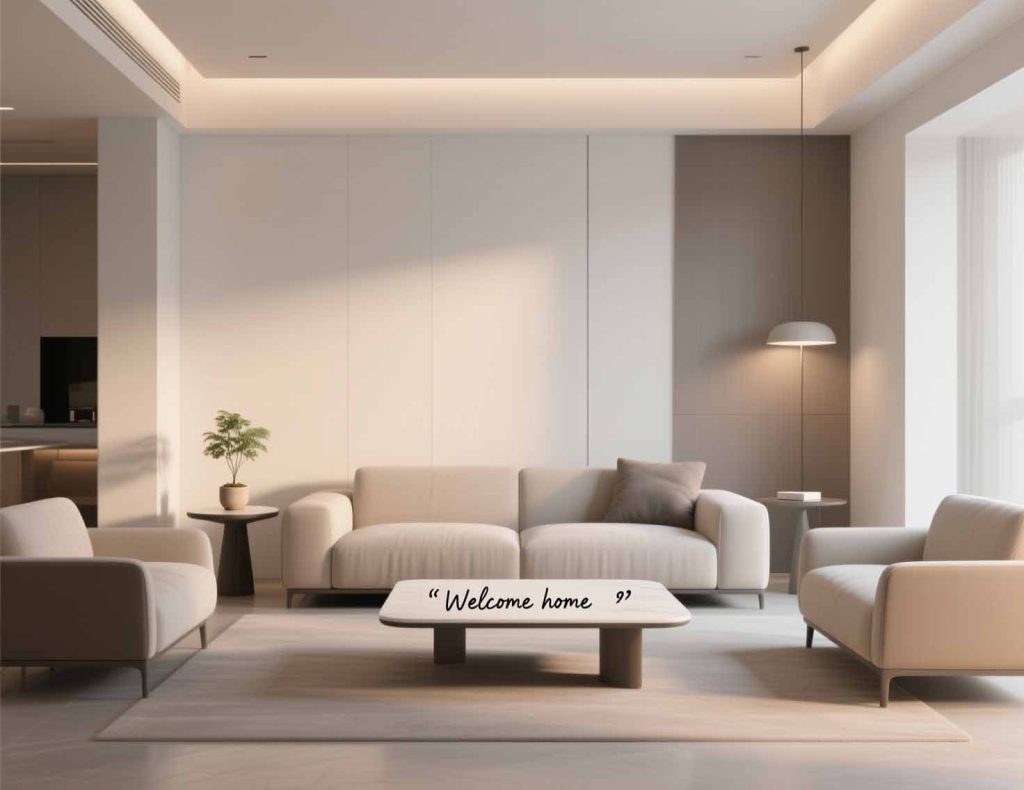Walk into any magazine-worthy apartment these days, and you might notice a trend creeping in: homes that look perfectly curated, like every cushion, light, and rug was plucked from a design algorithm. Artificial intelligence is stepping into interior design, promising to optimize your space, maximize light, and even pick colors that “boost happiness.”
Sounds dreamy, right? But there’s a catch. Can AI-designed homes really feel like home, or are we heading for spaces that are… soullessly stylish?
The Rise of AI in Interior Design
AI isn’t just about self-driving cars and chatbots anymore. From apps that generate floor plans to platforms suggesting furniture layouts, AI is entering the world of home design faster than you can say “Pinterest board.”
Some AI tools can:
- Suggest furniture placement based on room dimensions and usage.
- Pick color palettes that harmonize or create mood.
- Recommend decor styles based on your tastes or trending aesthetics.
- Even create 3D renderings so you can “walk” through your new living room before buying a single thing.
For busy professionals or design novices, it’s like having a personal designer who never sleeps, never charges a fee, and never judges your weird taste in throw pillows.
The Upside: Efficient, Practical, and Stylish
AI brings clear benefits to the table:
- Maximized space: Small apartments suddenly feel bigger. Rooms are optimized for function.
- Data-driven aesthetics: Colors, textures, and lighting aren’t just “pretty guesses” — they’re calculated for mood and harmony.
- Cost and time savings: Less trial-and-error. Less wandering through furniture stores wondering why your couch looks weird with the rug.
- Inspiration for novices: People who feel overwhelmed by design suddenly have a starting point, a visual map to guide their choices.
For a lot of people, that’s a huge win. AI doesn’t just make your home look good—it makes decorating less stressful.
The Soul Question: Can AI Capture Personality?
But here’s the rub: a home isn’t just about efficiency. It’s about personality. Memories. Quirks. The things that make a space feel like yours.
- AI can’t feel nostalgia: That lamp you inherited from your grandma? AI might suggest a modern replacement because it “matches the style.”
- AI can’t embrace imperfection: Real homes have lived-in wrinkles, uneven bookshelves, and messy corners. AI loves symmetry and balance. Sometimes too much.
- AI can’t tell your story: Each piece in your home tells a story. Your coffee table isn’t just a coffee table — it’s where you spilled wine the first night in your apartment, where you celebrated milestones, where you argued with your roommate. AI can’t design for those stories.
Which means… even if your AI-designed living room is gorgeous, it might lack heart. That cozy warmth, the sense of you, can be missing.
Balancing AI Style with Human Soul
The good news? You don’t have to choose between style and soul. Many designers are now using AI as a tool, not a dictator.
- Start with AI suggestions: Let it generate floor plans, color palettes, and furniture ideas.
- Add personal touches: Bring in heirlooms, souvenirs, handmade art — anything that reflects your story.
- Break the rules: AI loves symmetry; chaos adds charm. A mismatched chair or quirky wall art can turn perfection into personality.
- Experiment: Use AI as a sandbox, not a blueprint. Try different combinations virtually, then tweak in real life.
That way, you get the best of both worlds: efficiency and soul.
When AI Goes Wrong
Of course, there are horror stories. Homes that feel sterile, like a showroom, or worse — like a sci-fi lab.
- Over-optimized spaces: Every object perfectly placed, leaving no room for spontaneity or human mess.
- Trend-chasing traps: AI sometimes pushes trendy choices that feel generic, not personal.
- Lack of emotional resonance: A room can look stunning and still feel cold or impersonal.
It’s a reminder that design isn’t just a science. It’s an emotional experience. AI can assist, but it shouldn’t override intuition.
The Future: AI as a Design Partner
Looking ahead, AI won’t replace human designers. But it can become a powerful partner. Imagine:
- AI scans your home and suggests seasonal decor changes.
- It predicts traffic flow and lighting adjustments for comfort.
- It helps you mix styles — modern, rustic, eclectic — in ways you never thought possible.
But the final call? That still belongs to humans. Your quirks, your stories, your memories. No algorithm can replicate that.
Final Thought
AI can make homes stylish, efficient, and Instagram-ready. But a home is more than aesthetics; it’s a living space filled with laughter, messes, and memories. Use AI as a guide, not a replacement. Let it handle the logistics and trends, but keep the soul — the human touch that turns four walls into home.
Because no matter how smart an algorithm gets, it can’t create love, laughter, or the feeling of coming home to you.



